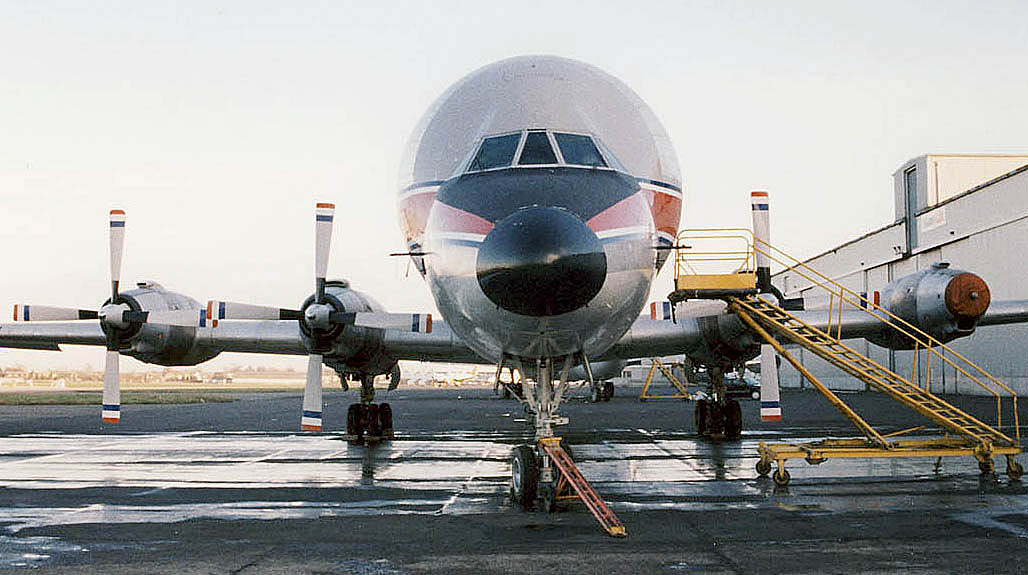
Canadair CL44
 |
| Conroy's conversion of the Canadair CL44 design resulted in an aircraft with a dramatically increased fuselage diameter. The sole example is the only member of the family still flying. |
| The Canadair CL44 was a development of the Bristol Britannia
and always intended specifically as a freighter. The type began in 1956 as a requirement by the Royal Canadian Air Force for a long-range troop and freight transport. Canadair already had a production licence for the Britannia as it had used the design as the base for its Argus maritime patrol aircraft and proposed several new versions. The original order in 1958 specified Bristol Orion turboprops but, when this engine design was cancelled, it was redesigned around the Rolls-Royce Tyne and designated CL44D. The first of 12 Yukons for the RCAF flew for the first time on November 15, 1959, and the last was delivered in 1961. Canadair then marketed a version for commercial use and offered a hinged rear fuselage to allow easier loading of pallets and other large objects. The CL44D-4 first flew on November 16, 1960, and initial orders were placed by Flying Tiger, Seaboard World and Slick, all US cargo operators. The total production of this variant reached 27, including an order from Loftleider of Iceland which used the type as a 178 passenger aircraft on transatlantic services. Canadair then developed the CL44J with a 15ft (4.6m) fuselage extension to give space for 214 passengers. The last production CL44D-4 aircraft was converted to this standard and three others were subsequently reworked, all for Loftleider. Cargolux later bought the aircraft, known as Canadair 400s, and used them as pure freighters. The US-owned aircraft were later passed on to other companies, with the UK-based Transmeridian becoming a major user in the 1970s. The airline also operated the sole CL44-0, which was rebuilt by Conroy Aircraft in 1968 with a larger fuselage cross-section. The RCAF disposed of its Yukons in 1973 and several were passed on to civil operators but by the 21st century all had been retired apart from the Conroy machine, which has been stored at Bournemouth in the UK for several years. |
| Contents | Photos and census | Update |